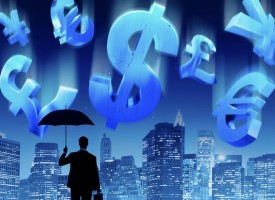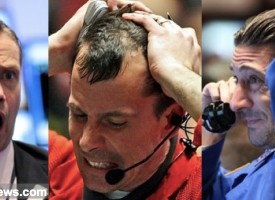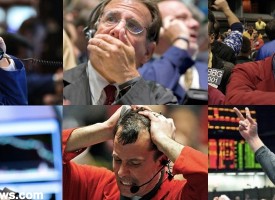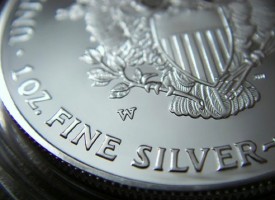One thing is becoming quite clear, the price of new cars are too high even for the affluent.
“The Car Payment Is Too Damn High”
November 14 (King World News) – Gerald Celente: A growing number of upper-income Americans are dropping out of the new-car market, according to a report by Bloomberg.
The average sticker price of a new car has reached $48,205, 21 percent more than in 2019, research service Cox Automotive reported.
The monthly payment on that average price now averages $767, a 17-percent increase from 2020’s level, Cox said. One in every six buyers of new cars face monthly payments of more than $1,000, research firm Edmunds noted.
“Blame it on ballooning sticker prices resulting from more technology, automakers’ quest for fatter profit margins, and skyrocketing auto loan rates,” Bloomberg said.
Car companies feel pressed to continue investing in electric vehicle technology and infrastructure, even though the market is not yet there to deliver a return on that investment.
Inflation has driven up the cost of everything needed to make a car, including computer chips that factories were unable to get for months during the COVID War…
Listen to the greatest Egon von Greyerz audio interview ever
by CLICKING HERE OR ON THE IMAGE BELOW.
In addition, car companies have tricked out their vehicles with expensive digital technology, such as dashboard touchscreens, self-parking systems, and braking and crash-avoidance sensors, some of which were mandated by regulation.
“Hyperinflation has made these cars really, really expensive,” auto dealer Rhett Ricart in Ohio told Bloomberg. “By increasing the technology content and the safety content on these vehicles, we’ve packed on a lot of expenses.”
Because the average car traded in is six years old, shoppers expect to pay a net $35,000 for a new car, a survey by auto research firm Edmunds found. A six-year-old car was bought new for a price around the mid-$30,000s, so owing about the same amount or less after trading it in seems reasonable, Edmunds acknowledged.
“When they discover they’ll have to pay almost $50,000, they’re walking away,” Bloomberg reported. Seventy-three percent of consumers are not planning to buy a new car any time soon because prices are so high, Edmunds’ survey reported.
“The prices are just shocking people,” says Jessica Caldwell, head of insights for Edmunds. “They’re like, ‘How come buying the same car costs $300 more a month?’”
As a result, new cars are becoming a privilege of the wealthy. The 20 percent of U.S. households with annual incomes of at least $265,000 made up 55 percent of new car sales in 2023, compared to 40 percent in 2020, data compiled by research service AlixPartners showed.
Households with incomes of no more than $41,000 accounted for only 6 percent of new-car sales last year.
The price of a new car is steep but now the price of a loan is as well.
The average interest rate on a loan for a new car reached 7.1 percent in September; in 2019, it was 5.7 percent, Bloomberg said. Interest rates on loans for used cars climbed to 11.2 percent in September and were 8.4 percent five years ago.
The U.S. Federal Reserve’s interest rate cuts in September and November probably will reduce the typical car payment by less than $50 a month, Bloomberg calculated.
To accommodate that burdensome loan, one in every five car loans stretches payments over seven years, not the five that was the norm before COVID.
For many, used cars are not an affordable alternative. A used set of wheels carried an average price of $27,422 in September, a steep 32-percent hike from 2019, with monthly payments averaging $549, compared to $416 five years ago.
Consumers should not expect car companies to make things better.
“Automakers aren’t sufficiently motivated to solve the affordability crisis because they’re making more money selling fewer cars to richer buyers,” Bloomberg said.
Americans will buy about 15.7 million new cars and trucks this year, Cox forecasts, more than a million fewer than before the COVID era. Car makers averaged more than 17 million sales each year from 2015 through 2019.
However, even though sales decreased last year, Ford, General Motors, and multi-brand owner Stellantis posted a collective net income of $34.7 billion, better than a 30-percent gain from 2022.
“Every auto CFO went, ‘Oh, my God, this is fantastic,’” Mark Wakefield, co-director of AlixPartners’ auto practice, said to Bloomberg. “I’m going to sell what I make money on.”
Following the money trail, auto companies have largely abandoned the small, low- or no-profit cars that gave young buyers an entry to the new-car market.
In 2012, vehicles priced under $30,000 made up more than half of new-car sales; vehicles priced at least at $50,000 accounted for just 6 percent. Now vehicles above $50,000 represent 44 percent of new-car sales, while models priced below $30,000 hold just 12.7 percent of the market, Cox found.
Bloomberg spoke with a Phoenix couple expecting a child and hoping to trade up to a three-row SUV. The average car payment of $767 is “not even close” to affordable, the man said, even though he works as a marketing account manager and his wife is a data analyst.
“Anything topping $400 a month would be scary,” he said.
TREND FORECAST:
Like owning a home, owning a new car is becoming an upper-class privilege.
With the average price of a new car spiking some 30 percent since politicians launched the COVID War in 2020, it is no wonder younger adults have less interest in owning a car and are calling Uber and other ride-hire services instead.
China could deliver electric vehicles (EVs) to the U.S. with sticker prices below $30,000. However, President Joe Biden has proposed to hang tariffs as high as 102 percent on Chinese EVs and the new White House head Donald Trump will keep raising the tariffs on China. Indeed his selections of Secretary of State Marco Rubio and National Security Advisor Mike Waltz are very anti-China.
As Bloomberg news reported today:
“US-China relations are shaping up to be as adversarial as expected, with President-elect Donald Trump poised to appoint two well-known China hawks for key roles as he starts to form for his “America First” cabinet. Senator Marco Rubio, who has taken a particularly aggressive approach to China’s economic rise and is one of several US officials barred from entering the country, is said to be in line for secretary of state. Hong Kong shares led losses in Asia on fears this will mean years of trade clashes ahead. Representative Mike Waltz, who also views China as a “greater threat” to the US than any other nation, appears to be headed for the influential role of national security advisor. Zhu Junwei, a former researcher in the People’s Liberation Army and now director at Grandview Institution in Beijing, had this to say about a Rubio appointment: “It would be a nightmare coming true if he got the job.”
Beyond China, Donald Trump’s promise to increase tariffs across a wide spectrum of products coming from other nations will keep auto prices high and out of reach for many… and especially young Americans.
JUST RELEASED!
To listen to Rob Arnott discuss how investors around the world can prepare themselves for the turbulence in global markets that lies ahead CLICK HERE OR ON THE IMAGE BELOW.
To listen to the jaw-dropping gold and silver price predictions that Nomi Prins just made CLICK HERE OR ON THE IMAGE BELOW.
© 2024 by King World News®. All Rights Reserved. This material may not be published, broadcast, rewritten, or redistributed. However, linking directly to the articles is permitted and encouraged.










